- Home
- Mark Wayne McGinnis
Cloudwalkers Page 3
Cloudwalkers Read online
Page 3
Farthest off in the distance, where the Drummond Clan resided, was the 432 Park Avenue Building. Closer in, the Carmichael Clan’s 30 Hudson Yards Building. The Baird Clansmen were over there in the W57th Street Tower, and the Fletcher Clan were within the 1 Vanderbilt Avenue Building. The Shaw Clan occupied the 53W53 building, and the Logan Clan abided within the former New York Times Building. The Buchanan Clan lived within the Spiral Building.
The only other rising tower, unclaimed by any one clan, was the beautiful 1,047-foot-tall Chrysler Building, which still looked much like it did in the pictures Conn had seen from before the Ruin. Below the cloudbank, Conn knew that it was coated in shingles made of rubber and painted with sap from the Ragoon trees to protect it from the constant fall of acid rain, just like every other building in Manhattan. But up here, the Chrysler Building still stood in all its historic glory. On top, where once brilliant electric lights had shone, the Skylanders now lit lamps and lanterns to shine as bright beacons that marked the tower as the pride and joy of the Manhattan skylands. When the seeping acid rains finally took the old New York Public Library some three hundred years back, The Chrysler Building became the new home for all the books that could be saved. Since then, the Chrysler had become a place of higher learning, which each the clans utilized. It was where young Celtic boys and girls began their training, not only to become Cloudwalkers, but also to become defenders of their respective clan’s heritage, on-call warriors in their own right, though Conn had only known relative peace in his lifetime.
Conn stared across the dark void toward the glistening, ornate spire atop the Chrysler Building. Although the Empire State Building was certainly the power hub for all the Midtown clans, the Chrysler Building was the true educational and spiritual heart-center for all Cloudwalkers. Observing the flickering of candlelight in distant windows, his heart suddenly felt heavy as he thought of all the things that Dob had taught him there. God, I miss him. His thoughts drifted back in time.
Young nine-year-old Conn saw him, a contrasting dark shape on the distant white horizon: Professor Claremont Dob. Conn couldn’t remember ever not knowing him.
No one else in his right mind would be out and about on a day like this. Rampage alarms had already started to chime, their loud Dings echoing even above the howling of the wind. The boy maintained his fast pace despite the winds pummeling him from all directions, all the while keeping a wary eye on the cloudbank. Although quite early for a Skylander boy, Conn had recently acquired the Sight, and he was confident in his ability to spot any shrouded quickfall patches along his route. He wasn’t supposed to be out here, especially on his own, until his Sight strengthened to its full potential. Especially when God’s Rampage was imminent. But he was with Bryant, and they wouldn’t be on their own once they reached Dob, Conn reasoned.
Closer now, Conn watched the old man staring up at the clouds of inclement weather fast approaching, gesturing with his staff raised high into the air, and his other arm, the one missing the hand, waving wildly at the oncoming storm. He was yelling something passionately, though it was still unintelligible from such a distance. Conn wasn’t sure if he was speaking to the largest of the cumulonimbus thunderheads overhead, or perhaps to God Himself.
Ding! Ding! Ding! Ding!
When the young Skylander finally reached the professor, he was heaving great big breaths and trying to pretend he wasn’t scared. Conn noticed an old wooden crate lying next to Dob on the cloudbank, packed with an assortment of stoppered glass bottles. Some contained colorful liquids, while others were filled with granules of powder.
“There you are, my boy!” cried the professor, finally noticing his arrival. “Isn’t this amazing? Can you feel the atmospheric ions all charged-up and clambering for our attention?”
Ding! Ding! Ding! Ding!
The professor’s smile was contagious. “Aye, I think I can!” Conn yelled back into the howling wind. He wasn’t exactly sure what an atmospheric ion was, but if the professor said they were about, then no doubt they were there.
The professor arched his back, his face now practically horizontal, then yelled, “Kalaminbusza!”
He did that sometimes. Made words up out of the blue to express something he was feeling or thinking. Conn was only nine, but this wasn’t the first time he’d had the odd sensation that he was the most mature of the two. The Professor was strange, unanimously considered an oddball by the rest of Skylander society. But Conn figured a certain amount of leeway should be given to someone like him, considering how magnificently brilliant he was.
Word had it that as a young man, the professor had been a Cloudwalker. No one would tell him the story, no matter how much he asked, but Conn heard that it had something to do with the professor’s missing hand. Conn couldn’t recall seeing him ever wearing a kilt—only a seemingly endless collection of long, light-colored robes with a deep hood that he wore flung back over his shoulders. The look suited his wild and disheveled white hair, long white beard, and crooked nose, bulbous at its end. But despite his old age and wild idiosyncrasies, his piercing blue eyes were sharp and keen, a fact that often unsettled people.
Dob lived high up in the Chrysler Building in a modest, cozy suite of rooms, but he was seldom found there. More often, Dob spent his time in a classroom teaching, or tinkering in his cluttered laboratory, his spectacles precariously propped onto the tip of his big nose. Just as frequently he could be found outdoors, conducting some kind of strange experiment, For Conn, the professor’s utter passion for the natural sciences had been catching. Conn’s unbridled curiosity about such things was a tad annoying to just about everybody else—even his best friend Bryant—but not to Dob. Conn had no mother to watch over him, and his father was far too busy being a CloudMaster to spend much time with his children, and so Conn was left with Bryant and the professor, who had become both a father figure as well as his best friend.
Ding! Ding! Ding! Ding!
“What are you doing out here, Professor?” asked Conn now, looking up at the roiling sky. He had to yell to be heard above the wind. “Might there be a God’s Rampage any second?”
Only a few decades after the Ruin, immense bolts of highly destructive lightning began striking outward from the cloudbank, both upward and down, as a result of the highly unstable electrical properties of the still-new cloudbank. At first, the strikes were thought to have been random, but it soon became apparent that the lightning was attracted to any source of external electrical energy.
Dob had explained it to Conn years ago. Everything—from energy emitted by the major power distribution lines that fed power to cities all across the globe, down to something as small and insignificant as the personal communication devices that people kept on them at the time—became targets. Even spark plugs, firing within a car’s engine block, exuded enough energy to attract a devastating lightning bolt, and other vehicles were affected as well. Aircraft were knocked from the sky by lightning that flashed upward from the cloudbank, and transportation was crippled. During eruption periods, entire neighborhoods were sometimes targeted, with houses and building structures exploding, one after another, in the blink of an eye. Even something so trivial as a spark created by static held the risk of attracting it.
The lightning was unlike anything the world had ever seen, because it wasn’t of this world; like most of the world’s problems in that era, it came from the Ruin. To preserve a population that was shrinking by the minute, the usage of all electrical devices became prohibited, and the world was quickly thrown into darkness and chaos. They had adapted since then, but in the centuries that followed, everyone—Skylander and Grounder alike—lived in fear of that lightning.
Everyone except Dob, it seemed. At the words ‘God’s Rampage’ from Conn’s lips, the professor actually smiled.
“Lightning is always possible, my young colleague, especially when such a large storm is brewing. But we have a bit of time. I’m conducting experiments on influences of charged isotopes on the cloudbank.�
� The professor brought his lifted gaze back down to the boy’s level, momentarily becoming the adult. “Hmm. It may not be such a good idea for you to join me on such a ferocious day . . .” But his own words were seemingly forgotten just an instant later, as the professor handed Conn his rackstaff then knelt down. Making a shovel with his straightened fingers, he dug deep into the surface of the cloudbank. Cupping his hand, he hefted up a heaping quantity of the white substance, which shimmered in his palm like both a solid and a gas, which it was. “Have I told you about the origins of the cloudbank, lad?”
Conn, back in the present, averted his eyes from the Chrysler Building. “You ken, Brig,” he said thoughtfully. “Once, hundreds of years in the past, bright electric lights would have illuminated that building—this whole city.” His eyes shifted to a building to his left where, partially obscured in the moonlight, he could make out the bite-shaped chunk taken from its side; a constant reminder how it all began.
The cluster of meteors that had caused the damage to that skyscraper weren’t supposed to be dangerous. Early scientists, from an organization called NASA, detected them with their powerful, long-distance telescopes, and assured Earth’s populace that there was no imminent danger. The small objects, they said, would burn up in the Earth’s atmosphere. Conn had read journal entries and newspaper stories from people who had watched the tiny asteroids streak across the high mesosphere of the Earth on the fateful evening of May 20, 2119; they had described the event as a brilliant, colorful meteor shower display, the likes of which no one on Earth had ever seen before. An exact count would have been close to impossible, but experts at the time estimated that there were close to eight hundred direct meteoric impacts across the globe, and no single continent was spared. The damage was considerable, but the aftermath was worse than anyone could have imagined. In the five centuries that followed, the event became known to Earth’s survivors as the Ruin. Conn could remember the very words Dob had used to explain it to him: the end of one way of life and the beginning of another.
“Brig, you ken how this happened, aye?” he asked, gesturing to the silvery-looking cloudbank outside.
The boy looked up to him and nodded confidently. “I’m not stupid. I ken a lot of things. I listen. I watch.”
“That’s not what I meant,” Conn amended. “I ken you’ve a keen mind, lad, but you don’t have real schooling. Didn’t get to attend classes in the Chrysler Building.” And didn’t have someone like Professor Dob, filling his head on a near daily basis with amazing and wonderful—and sometimes useless—knowledge, he thought to himself.
“Not everyone is born into aristocracy, Conn.”
“Where’d you learn a word like that?” asked Conn, impressed.
Brig scoffed. “I ken lots of words. I like learning new stuff. Maybe someday soon I’ll learn to read.” The boy said it casually, as though discussing whether he would go for a walk.
Conn glanced over toward a small clock atop a nearby side table. Ten minutes to eight; he still had a few minutes, though he knew better than to keep his father waiting. He looked down at the boy’s curious upturned face. “We take a lot of things for granted, living up here so close to heaven. But it wasn’t always like this, ye ken?”
The boy stared out the window then shrugged noncommittally. “We all used to be Grounders, right? Until the Ruin. Everyone kens that.”
“Aye, and the Ruin changed everything, didn’t it?”
“Aye,” agreed Brig with a smile. “Before the Ruin, you couldn’t walk on clouds!”
Conn rolled his eyes. “It took everyone awhile to figure that part out. The whole world fell apart first before anyone could start to put it back together.”
“What do you mean?” Asked Brig, puzzled. “I thought after the Ruin, the Macbeth Clan—”
“You’re getting ahead of yourself, lad,” Conn interrupted with a laugh. “So many things changed after the asteroids struck. Almost immediately, and I’m still talking some five hundred years ago, a low-level haze formed about four to five hundred feet above ground. The haze appeared to be everywhere: above every continent and all the oceans. Within the year, it had thickened into something more like a cloud.”
“The cloudbank,” said Brig knowingly. Conn nodded in acknowledgement. He remembered learning about the Ruin with Dob, discussing the three otherworldly elements that had been introduced to the Earth from the meteorites that fell: Strongzine, Stadamine, and Starlox. All three of the new elements had an atomic mass so small it was determined by scientists to be actually negative, infinitesimally less than zero. Each one was gaseous, and had been released when the frozen asteroids reached high temperatures upon hitting the Earth’s atmosphere. As scientists soon discovered, Strongzine, Stradamine, and Starlox were all incredibly unstable, and none played well with some of the other, pre-existing Earth elements.
“Within three years after the Ruin, constant rainfall was an ongoing weather condition throughout the entire world. The frozen icecaps which once covered the Earth’s poles, or what remained of them anyway, were quickly melting into the sea, and the landscape of the entire planet was dramatically being altered for the worse. Rising ocean levels completely destroyed coastal land areas, sometimes for miles. All over the world.”
“But what about Manhattan?” asked Brig. “Isn’t the city right next to the ocean? And Jersey City, too!”
“Right,” answered Conn, pleased. The boy was quick; Conn was willing to bet he could have been a scholar if he’d had proper schooling. “But both Manhattan and Jersey City had looked ahead. They were some of the first worldwide to react to the rising sea levels. You’ve seen the rampart walls at the cities’ borders, right?”
Conn had long suspected the boy had done his fair share of exploring beneath the cloudbank, and Brig nodded in sheepish confirmation.
“Our ancestors built those walls to hold back the sea.”
“Why didnae all the cities build walls like ours? Then everyone would have been safe, right?”
“Maybe they would have, but as soon as the cloudbank began to form, it began to trap two substances—sulfur dioxide and nitrogen oxide—together, mixing them. They reacted with water, oxygen, and other elements to form the acid rain that still falls on the ground today. Before the Ruin, Brig, normal clouds rained only fresh water, like what we get from the clouds above the skylands, but this new cloudbase was completely different, being both solid and gas simultaneously, influenced by those negative mass properties of the Strongzine, Stradamine, and Starlox elements. In essence, the physical mass properties of the much-heavier-than-air cloudbase, to a notable degree, had the unprecedented ability to defy gravity. Understand?”
A deep crevice formed between Brig’s brows, but the boy was too stubborn to admit he was getting lost. “What does all that have to do with the walls?” he asked.
“The acid rain began to destroy everything. People couldn’t go outside without a heavy rain slicker, for fear of damage to their skin. Livestock—animals that people kept for food and such—were dying off at ridiculous rates, and those that remained needed to be kept sheltered at all times. A few organisms adapted, but most—both on land and in the sea—went extinct within just a few years. Pigeons survived, so did some rodents, and lots of bugs.”
“Yeah,” agreed Brig with a giggle. “There’s no shortage of cockroaches around here!”
Conn shushed him. He was beginning to get into the story; thanks to Dob’s teachings, he loved history and science, but rarely had such a willing outlet for his lectures.
“The rain destroyed physical structures as well. Homes and buildings began to disintegrate, cars—vehicles that people used to use to get around—rusted to oblivion. So you see, building new walls around every city would have been impossible.”
“Why didnae they just coat the buildings like we do? People were stupid back then,” said Brig disdainfully, with the sort of confidence that could only be possessed by a nine year old who knows everything.
�
��Who do you think first thought of the practice? No one could drive anywhere anymore because of the lightning, and everyone was encouraged to stay indoors where they were safe, so vehicle owners were quick to give up their rubber tires. The tires were used to create some of the first and most effective coatings for buildings. Most people cut them up into shingles, which they overlapped onto the tops and sides of structures to protect them from the rain, and melted down rubber in a huge vat to use as an adhesive.”
“But they were still stupid,” Brig insisted. “Because everyone kens the rain ruins rubber if you don’t cover it with Ragoon sap.”
Conn winked at the boy. “They figured that out too. But it took awhile, because Ragoon trees never existed before the Ruin. With Strongzine, Stradamine, and Starlox as new elements in the world, there came a number of otherworldly bio-matter elements. The most noticeable was the Ragoon tree, which grew exceptionally strong and tall, even thriving in the harshest of acid rain conditions.”
“Everyone kens what a Ragoon tree is, Conn. They’re all over the place down there.”
Conn resisted the urge to laugh. It was time for him to meet with his father, but he couldn’t leave the lad just yet.
“Well here’s something you may not ken,” said Conn, lowering his voice and leaning in toward Brig, a conspiratorial smile on his face. “The Ragoon trees aren’t the only form of life to have appeared since the Ruin. Ye ken I told you most animals went extinct, aye?”
Brig nodded, intent.
Conn continued, “Most did, it’s true. But some adapted. Some changed. And some say they’re out there somewhere, fearsome creatures who live in the abandoned lands between civilized cities. They’re told to be vicious, and hungry for human flesh.”

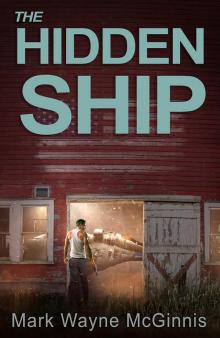 The Hidden Ship
The Hidden Ship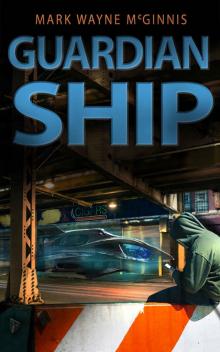 Guardian Ship
Guardian Ship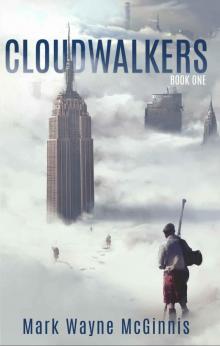 Cloudwalkers
Cloudwalkers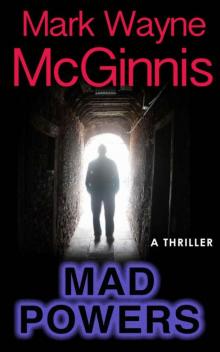 Mad Powers (Tapped In)
Mad Powers (Tapped In)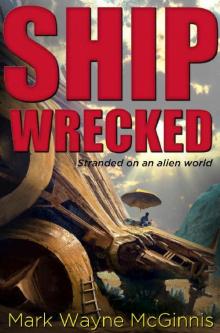 Ship Wrecked
Ship Wrecked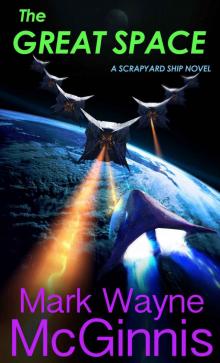 The Great Space (Scrapyard Ship Book 6)
The Great Space (Scrapyard Ship Book 6)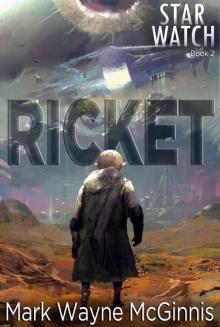 Ricket (Star Watch Book 2)
Ricket (Star Watch Book 2)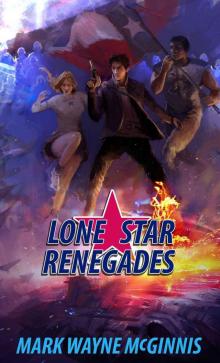 Lone Star Renegades
Lone Star Renegades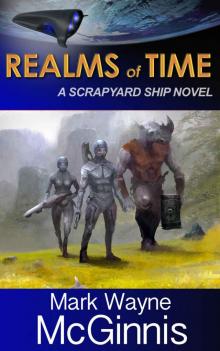 Realms of Time (Scrapyard Ship)
Realms of Time (Scrapyard Ship)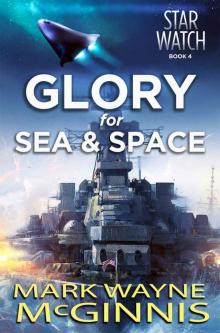 Glory for Sea and Space (Star Watch Book 4)
Glory for Sea and Space (Star Watch Book 4) Scrapyard Ship 3 Space Vengeance
Scrapyard Ship 3 Space Vengeance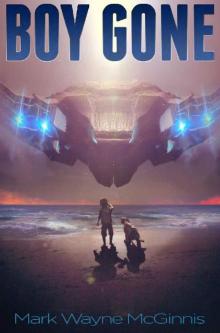 Boy Gone
Boy Gone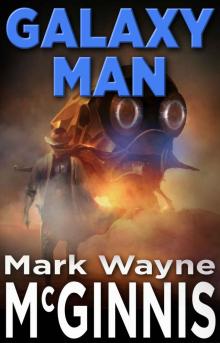 Galaxy Man
Galaxy Man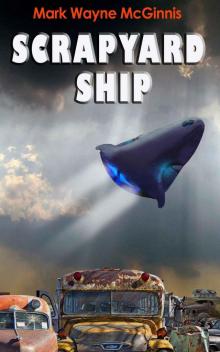 Scrapyard Ship
Scrapyard Ship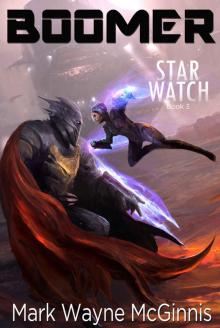 Boomer (Star Watch Book 3)
Boomer (Star Watch Book 3)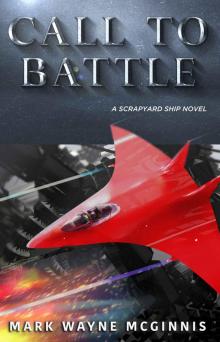 Scrapyard Ship 7: Call to Battle
Scrapyard Ship 7: Call to Battle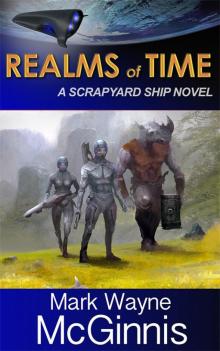 Scrapyard Ship 4 Realms of Time
Scrapyard Ship 4 Realms of Time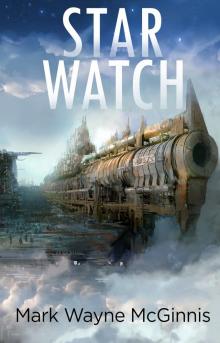 Star Watch
Star Watch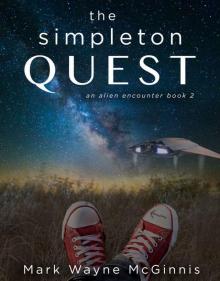 The Simpleton QUEST
The Simpleton QUEST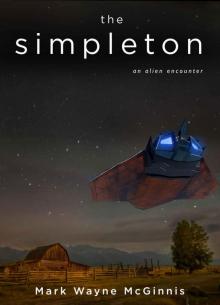 The Simpleton: An Alien Encounter
The Simpleton: An Alien Encounter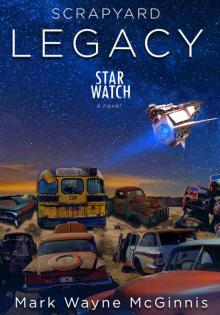 Scrapyard LEGACY (Star Watch Book 6)
Scrapyard LEGACY (Star Watch Book 6)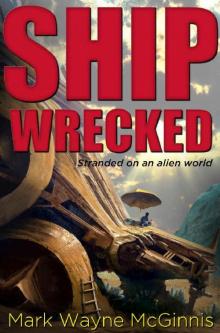 Ship Wrecked: Stranded on an alien world
Ship Wrecked: Stranded on an alien world